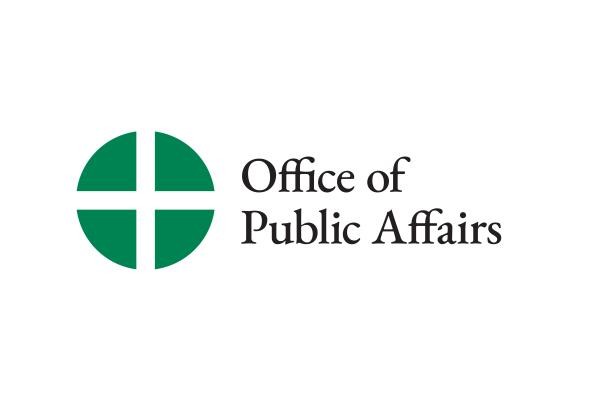West Coast Muslim-Catholic Dialogue Focuses On Scripture Interpretation
WASHINGTON—“Principles of Interpretation of Scripture with a Special Focus on the Figure of Moses” was the focus of the West Coast consultation between the United States Conference of Catholic Bishops (USCCB) and three Muslim organizations from the Sunni and Shi’a traditions.
WASHINGTON—“Principles of Interpretation of Scripture with a Special Focus on the Figure of Moses” was the focus of the West Coast consultation between the United States Conference of Catholic Bishops (USCCB) and three Muslim organizations from the Sunni and Shi’a traditions. The twelfth annual meeting of the dialogue took place in Orange, California on May 24-25. Bishop Carlos Sevilla of the Diocese of Yakima, Washington, and Muzammil H. Siddiqi, Ph.D., of the Islamic Society of Orange County, presided.
Father José Rubio of the Diocese of San José, California, spoke on “Principles of Interpretation of Scripture” in the Catholic tradition. He noted that interpretation of Sacred Scripture, or “exegesis” as it is commonly known, has changed markedly in the last 80 years in the Catholic Church, due to the resurgence of Catholic biblical scholarship in the first half of the 20th century.
“Christians believe that the whole Bible is inspired, that the Scriptures are true. But at the same time we affirm that biblical truth is not necessarily the same as historical truth,” he said.
His presentation highlighted how the Bible is not seen as dictated directly, but that it took over a millennium to be compiled. The authors wrote various parts in the context of their culture and society. But while the sacred texts were formed in the context of the community of the inspired writers, it was also necessary that those texts be received by that community. Thus, Christians see the Bible as the word of God written in human words. It is a collection of books of different literary genres that were received and accepted by the community of faith.
Father Rubio said most biblical scholars seek to understand the historical and cultural situation that produced the text and the social and cultural setting of someone reading the text today.
“We are conditioned by our unique situations to interpret texts differently,” he said.
Siddiqi presented on “Sunni Methods of Interpretation of Scripture.” He noted that the two sources of Islam are the Qur’an and the Sunnah/Hadith, which are the “words, deeds and approvals of the Prophet, reported by his companions.”
He said that the Qur’an needs to be interpreted in order “to explain its language and grammatical structure, immaculate and inimitable style, to elaborate its principles of faith, beliefs and arguments, to develop laws from its legal principles and injunction,” to use it for general guidance, preaching and taking lessons for daily life. “In a sense the whole of Islam is an interpretation of the Qur’an and Sunnah,” he said.
He explained the two initial forms of interpretation. The first is tasfir, meaning to explain, elucidate, interpret. It is a science by which the Qur’an is understood, its meaning explained and its rulings derived. The second is ta’wil, which seeks to return to the original meaning of a word or statement to explain and interpret. At first the two were used interchangeably, but they are actually different. Tafsir seeks to explain a particular word while ta’wil will choose one of its connotations. Put simply, tafsir is simple explanation and ta’wil is allegorical. Throughout Islamic history there is a rich development of interpretation which culminated in the compilation of classic commentaries which are still used frequently today. Many seek to interpret the Qur’an in the context of the modern age.
Sayed Moustafa al-Qazwini, from the Islamic Educational Center of Orange County presented on principles of interpretation from a Shi’a Muslim perspective. He mentioned that Shi’a Muslims believe that no verse of the Qur’an was left uninterpreted.
“When the revelations would descend upon the Prophet, he would then give instructional teachings to his close companions. This included the proper pronunciation of the verses, the proper recitation of the verses, the explanation and interpretation of the verses and how to implement and practice the verses in daily life,” he said. He said one of the ways the Prophet would explain the Quran is through the Quran itself, using later verses to explain earlier ones.
Additional Catholic participants in the dialogue included Father Michael F. Kiernan of the Diocese of Sacramento, California; Msgr. Dennis L. Mikulanis of the Diocese of San Diego; Rt. Rev. Alexei Smith of the Archdiocese of Los Angeles; and Father Leo Walsh, USCCB Staff. Other Muslim participants included Karim T. Abdullah, Ph.D., and Maryam Kim Kieu, Ph.D., of Seattle; Kalim Farooki, Shura Council of Southern California and chairman of the Islamic Society of Corona/Norco;Imam Taha Hassane, Islamic Center of San Diego;and Sherrel A. Johnsonof CAIR, Greater Los Angeles Area.
The next meeting of the West Coast Dialogue between Catholics and Muslims will be May 22-23, in Orange, California. The dialogue is co-sponsored by the USCCB Committee for Ecumenical and Interreligious Affairs and the Islamic Shura Council of California, with the cooperation of the Islamic Society of Orange County (an affiliate of the Islamic Society of North America) and the Islamic Education Center of Orange County, which is in the Shi’a tradition of Islam.
---
Keywords: Catholic, Muslim, dialogue, Islam, Secretariat for Ecumenical and Interreligious Affairs, Islamic Society of North America, Scripture, Bible, Qur’an, Bishop Carlos Sevilla
# # # # #



